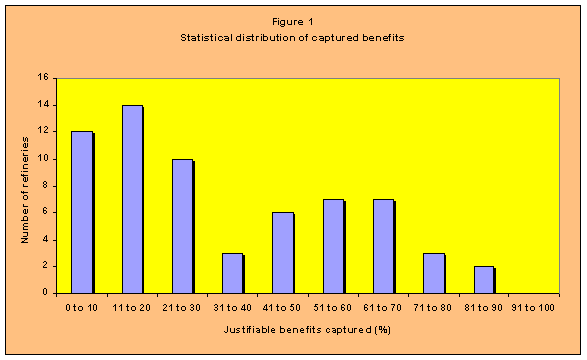
As part of their consulting assignments the authors are frequently asked to describe what is best industry practice in the area of Computer Integrated Manufacturing (CIM). This might be specific to a part of CIM, such as advanced controls or a laboratory system. Often it is in response to the enormous amount of publicity that CIM has been given - begging the question 'Who in the hydrocarbon industry is actually doing it?'. Although much of this information is available to consultants, client confidentiality precludes its release. Instead, this article includes a questionnaire which is intended to be completed by representatives of manufacturing sites. The data gathered will be analyzed and reported in a future issue. The intent is to give anyone who has completed the questionnaire the opportunity to assess the position of his site with respect to his competition.
To show how this might work a prototype study was completed by Whitehouse Consulting. This included an estimate of the advanced control benefits achieved in 68 refineries in Western Europe. So that sites could be compared, these were expressed as a percentage of the maximum economically achievable. Figure 1 shows the statistical distribution. The shape itself is interesting, showing two distinct peaks. Those in the upper group are refineries which have a clear commitment to advanced control and have progressed a number of major projects. Those in the lower group either have yet to install suitable hardware or have progressed advanced control with a small in-house group with no real project status.

Figure 2 is similar to what it is hoped will be included in the analysis of the results of this survey. As a cumulative distribution it allows the reader to assess his competitive position. For example, a refiner capturing 22% of the economic benefits would see that he is close to the median point, i.e. 50% of the refineries in the survey are doing better than him. The intention of this survey is to extend this principle to all aspects of CIM and to all the hydrocarbon industry.
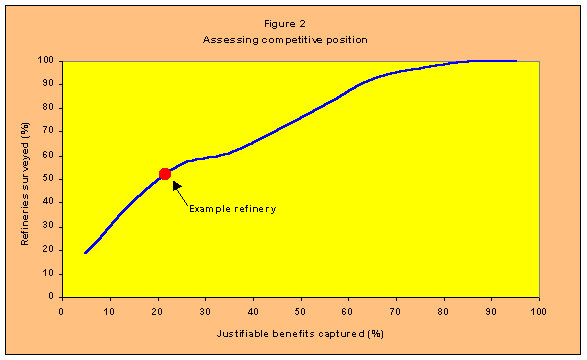
The questionnaire is intended to be completed quickly. Precise accuracy is not required since the results will be averaged from many responses. As a guide numerical answers should be correct to about ±10%. If it takes much more than a couple of hours to complete the questionnaire then omit the answers that are proving difficult.
We recognise that much of the information requested would be considered as confidential by most companies. We will be using the information only to publish global statistics. We have asked for contact details only so we can ensure that the response is genuine and that we do not count more than one answer from any site. An anonymous response would be better than none at all, but we may not be able to publish meaningful statistics if there are too many. At least the country should be specified. Again selected answers can be omitted if there are concerns about releasing specific information. Feel free to supplement answers with comments, particularly if any question does not have an appropriate box to select. Guidance on completing the questionnaire is given at the end of this article.
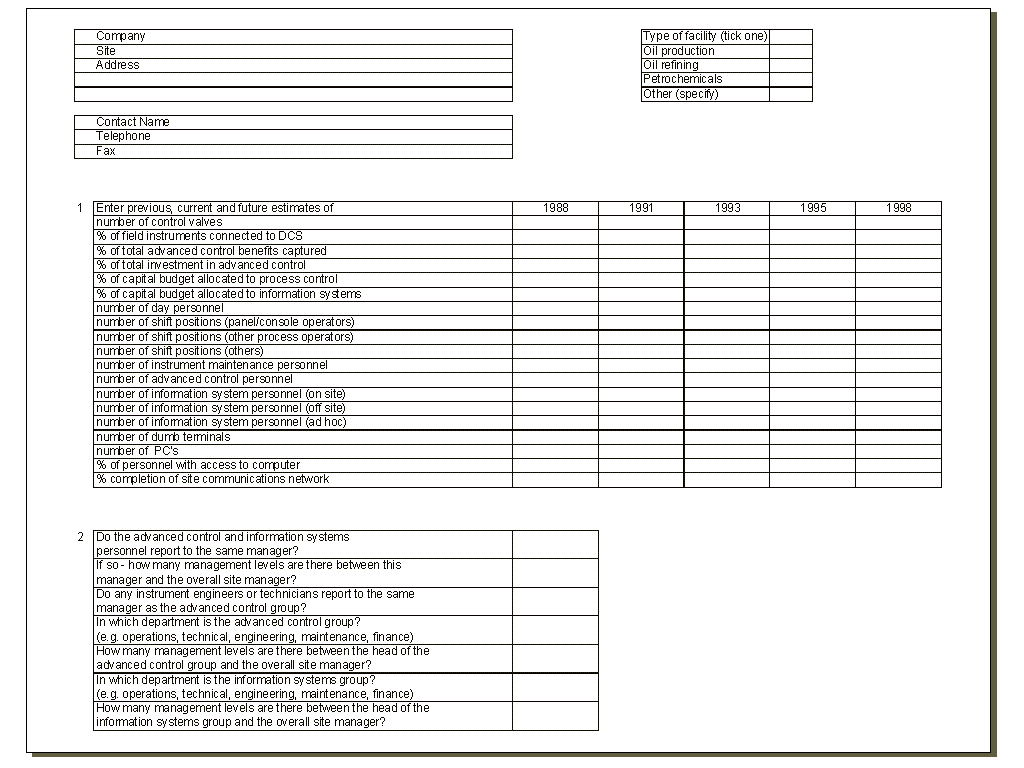
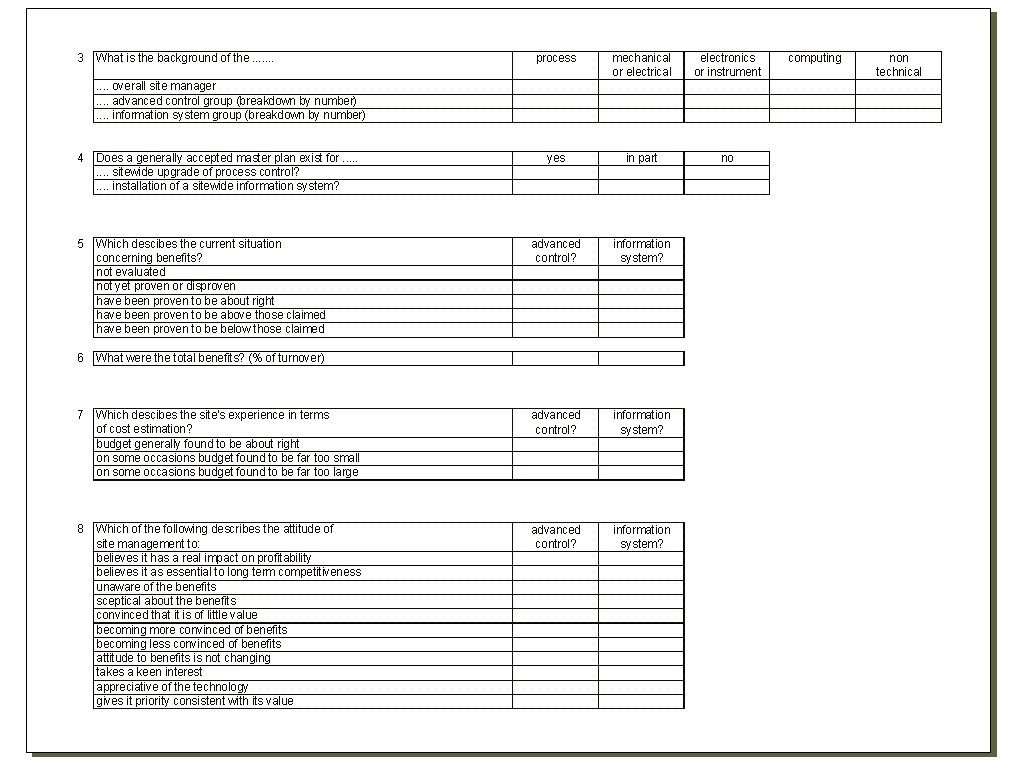
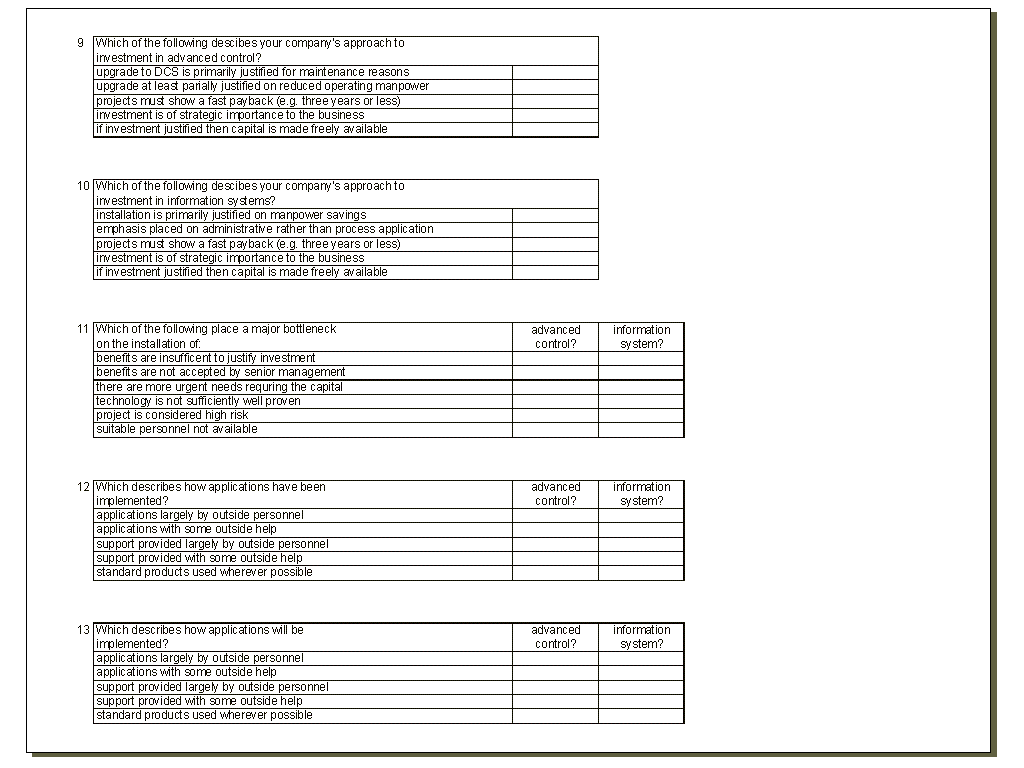
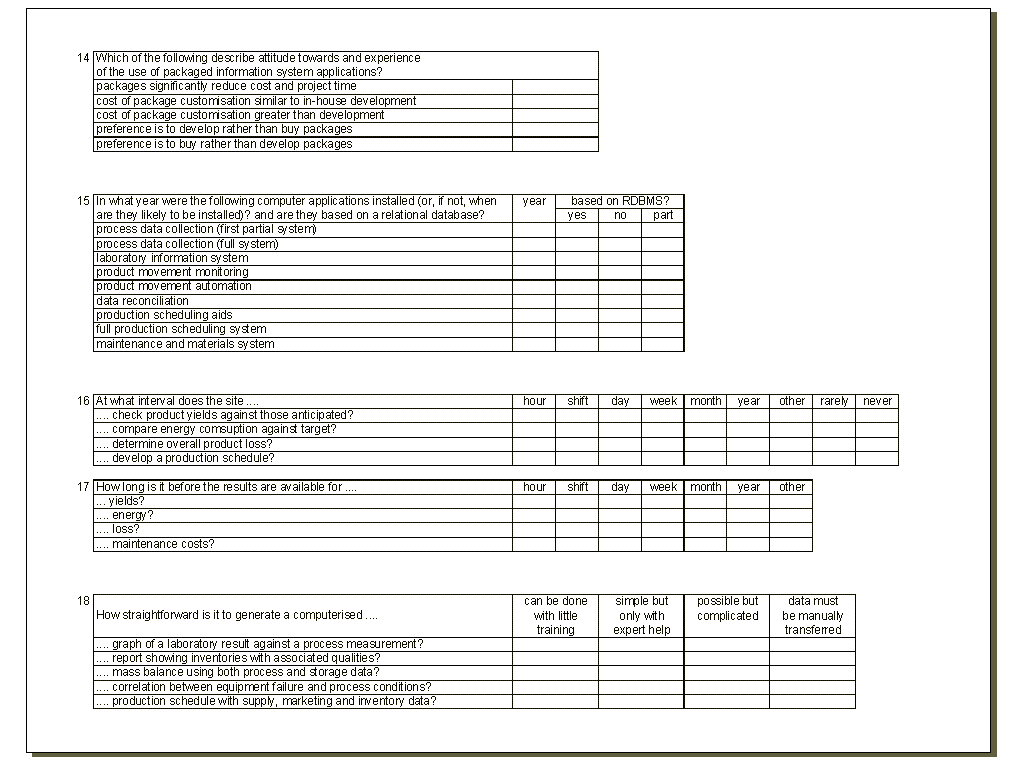
1. These questions are to collect basic numerical information which will be used to prepare statistics to allow site-to-site comparison. These might include ratios such as number of operating personnel per control valve, number of PC's per employee etc. The intention is to identify historical and future trends, hence the range of years.
2. There is a school of thought that CIM can be implemented much more effectively if there is a CIM manager responsible for all aspects of CIM. This question is designed to collect the information to see if there is such a correlation.
3. Like question 2, this is aimed at checking whether individual's technical background has a great impact on the implementation of CIM.
4. The key words in this question are 'generally accepted'. By this we mean a well documented published plan that has been reviewed and accepted by senior management as the basis for future projects.
5. Tick one situation for each of advanced control and information system.
6. Benefits should include the total identified, which is likely to be greater than those already captured. Turnover should be based on total product sales from the site. Within the accuracy of the exercise, if easier to evaluate, it is likely that % of feedstock costs will be close enough.
7. CIM projects are notorious for overrunning budgets. This question will see if this reputation is deserved.
8. Tick as many of the site management's attitudes as are applicable.
9. Again more than one approach may be applicable.
10. As question 9.
11. As question 9.
12. This question applies to existing applications. Select just one for each of advanced control and information systems.
13. This applies to future applications to determine if there has been a change in approach to CIM projects.
14. Standard packages appear to be a mixed blessing in the industry. Many sites are not prepared to incur the cost and risk of an in-house development. Others have experiences of customisation costs exceeding development costs. This question is intended to find out which is the prevailing view.
15. Enter the year in which each application was (or will be) commissioned and indicate whether a relational database is used by the application.
16. This question is not restricted only to computer based reporting; if a completely manual system exists then this should still be included.
17. This question is intended to determine the delay between the end of the accounting period and the availability of performance data. Again this includes fully manual systems.
18. This question is designed to investigate the level of integration of computer applications by posing some realistic situations with challenging data requirements.